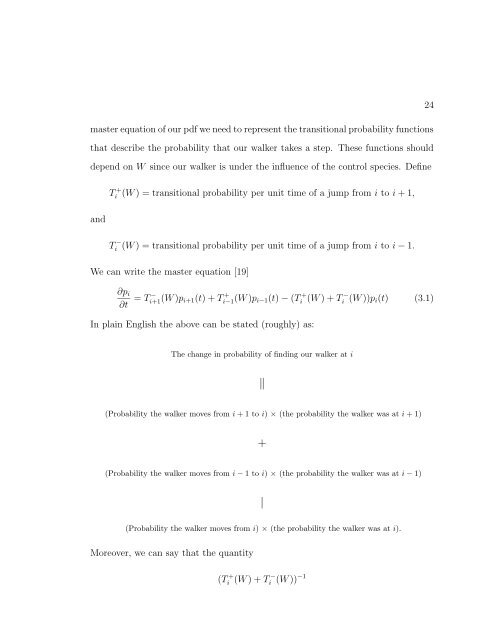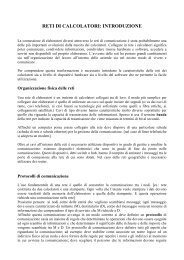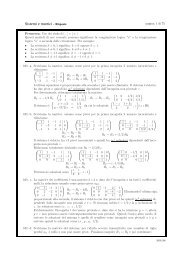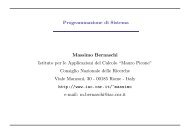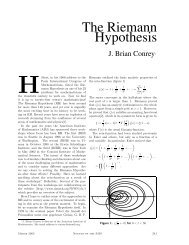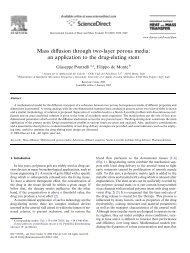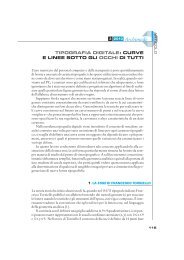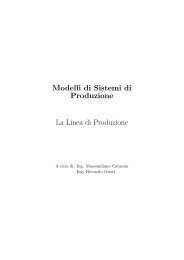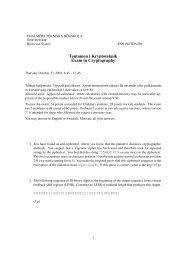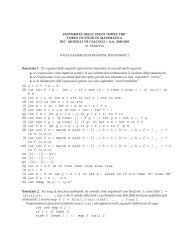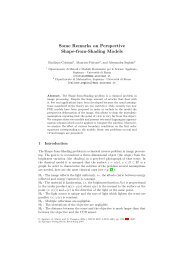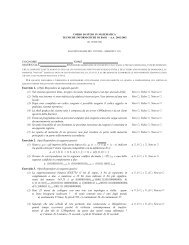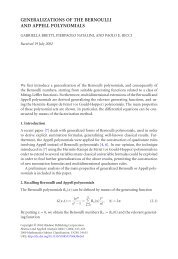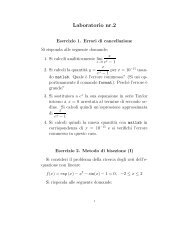A SHORT COURSE IN THE MODELING OF CHEMOTAXIS
A SHORT COURSE IN THE MODELING OF CHEMOTAXIS
A SHORT COURSE IN THE MODELING OF CHEMOTAXIS
You also want an ePaper? Increase the reach of your titles
YUMPU automatically turns print PDFs into web optimized ePapers that Google loves.
master equation of our pdf we need to represent the transitional probability functions<br />
that describe the probability that our walker takes a step. These functions should<br />
depend on W since our walker is under the influence of the control species. Define<br />
and<br />
T +<br />
i (W ) = transitional probability per unit time of a jump from i to i + 1,<br />
T −<br />
i (W ) = transitional probability per unit time of a jump from i to i − 1.<br />
We can write the master equation [19]<br />
∂pi<br />
∂t<br />
= T −<br />
i+1 (W )pi+1(t) + T +<br />
In plain English the above can be stated (roughly) as:<br />
24<br />
i−1 (W )pi−1(t) − (T +<br />
−<br />
i (W ) + Ti (W ))pi(t) (3.1)<br />
The change in probability of finding our walker at i<br />
�<br />
(Probability the walker moves from i + 1 to i) × (the probability the walker was at i + 1)<br />
+<br />
(Probability the walker moves from i − 1 to i) × (the probability the walker was at i − 1)<br />
|<br />
(Probability the walker moves from i) × (the probability the walker was at i).<br />
Moreover, we can say that the quantity<br />
(T +<br />
i<br />
(W ) + T −<br />
i (W ))−1


